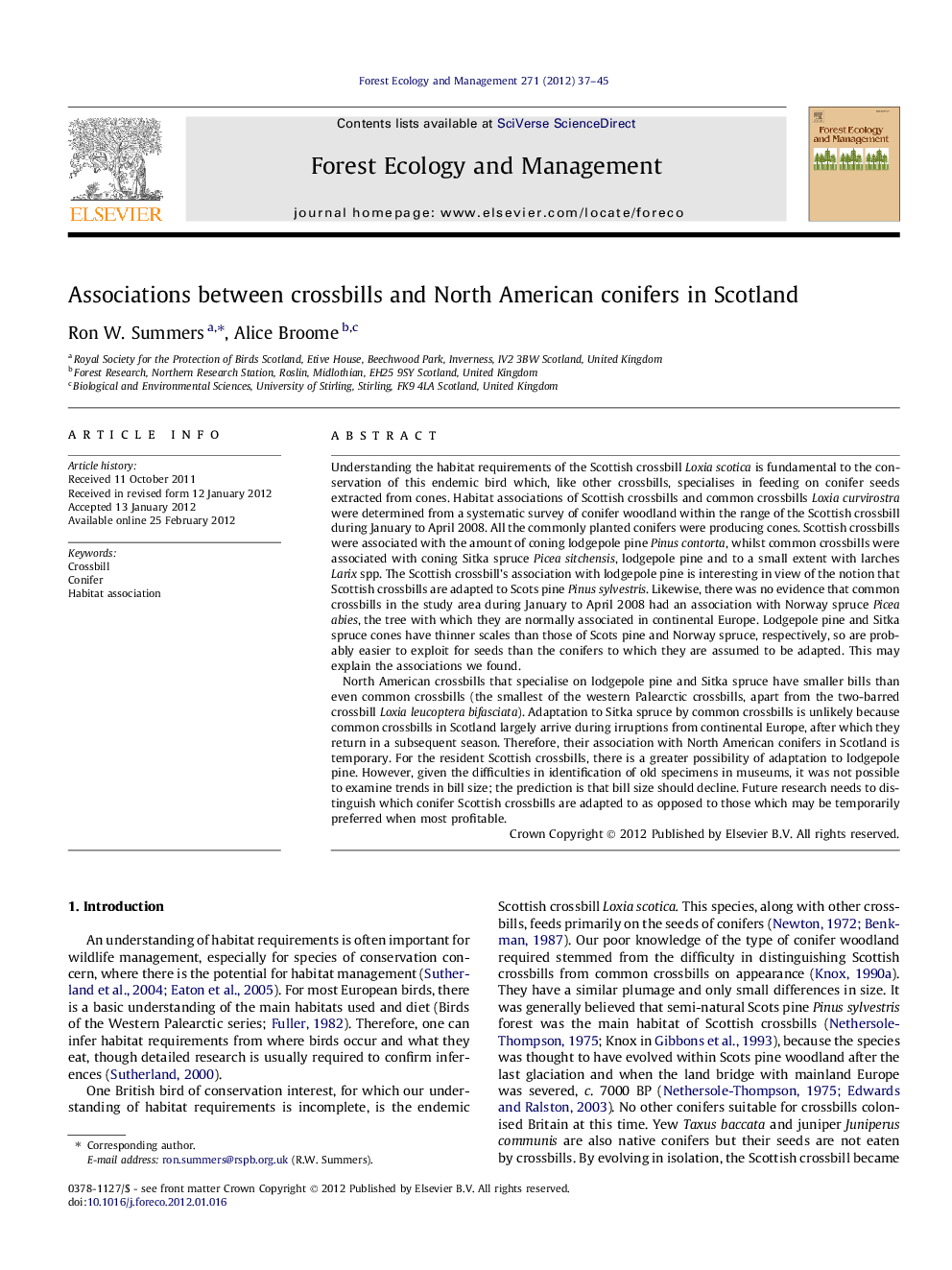| کد مقاله | کد نشریه | سال انتشار | مقاله انگلیسی | نسخه تمام متن |
|---|---|---|---|---|
| 87396 | 159249 | 2012 | 9 صفحه PDF | دانلود رایگان |

Understanding the habitat requirements of the Scottish crossbill Loxia scotica is fundamental to the conservation of this endemic bird which, like other crossbills, specialises in feeding on conifer seeds extracted from cones. Habitat associations of Scottish crossbills and common crossbills Loxia curvirostra were determined from a systematic survey of conifer woodland within the range of the Scottish crossbill during January to April 2008. All the commonly planted conifers were producing cones. Scottish crossbills were associated with the amount of coning lodgepole pine Pinus contorta, whilst common crossbills were associated with coning Sitka spruce Picea sitchensis, lodgepole pine and to a small extent with larches Larix spp. The Scottish crossbill’s association with lodgepole pine is interesting in view of the notion that Scottish crossbills are adapted to Scots pine Pinus sylvestris. Likewise, there was no evidence that common crossbills in the study area during January to April 2008 had an association with Norway spruce Picea abies, the tree with which they are normally associated in continental Europe. Lodgepole pine and Sitka spruce cones have thinner scales than those of Scots pine and Norway spruce, respectively, so are probably easier to exploit for seeds than the conifers to which they are assumed to be adapted. This may explain the associations we found.North American crossbills that specialise on lodgepole pine and Sitka spruce have smaller bills than even common crossbills (the smallest of the western Palearctic crossbills, apart from the two-barred crossbill Loxia leucoptera bifasciata). Adaptation to Sitka spruce by common crossbills is unlikely because common crossbills in Scotland largely arrive during irruptions from continental Europe, after which they return in a subsequent season. Therefore, their association with North American conifers in Scotland is temporary. For the resident Scottish crossbills, there is a greater possibility of adaptation to lodgepole pine. However, given the difficulties in identification of old specimens in museums, it was not possible to examine trends in bill size; the prediction is that bill size should decline. Future research needs to distinguish which conifer Scottish crossbills are adapted to as opposed to those which may be temporarily preferred when most profitable.
► The Scottish crossbill is an endemic bird species whose habitat requirements are poorly known.
► Scottish crossbills were associated with the introduced lodgepole pine rather than the Scots pine.
► Common crossbills had an association with Sitka spruce and lodgepole pine.
► The study was carried out in one season and year.
► Cone crops vary, so the study needs to be repeated.
Journal: Forest Ecology and Management - Volume 271, 1 May 2012, Pages 37–45